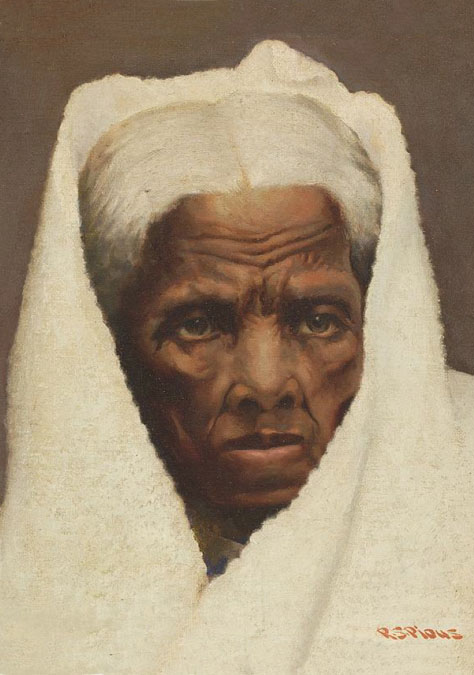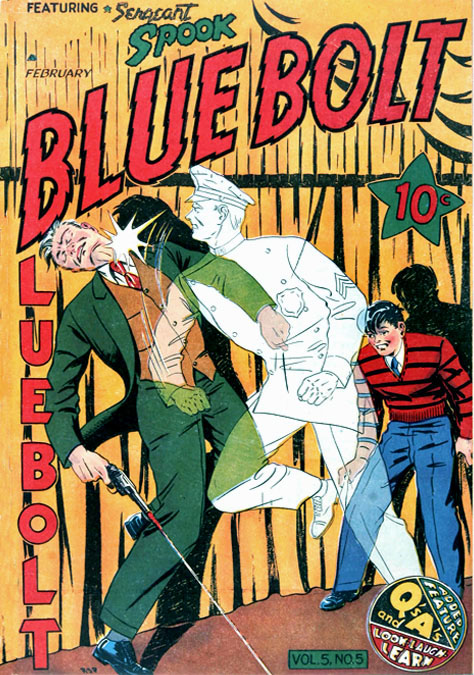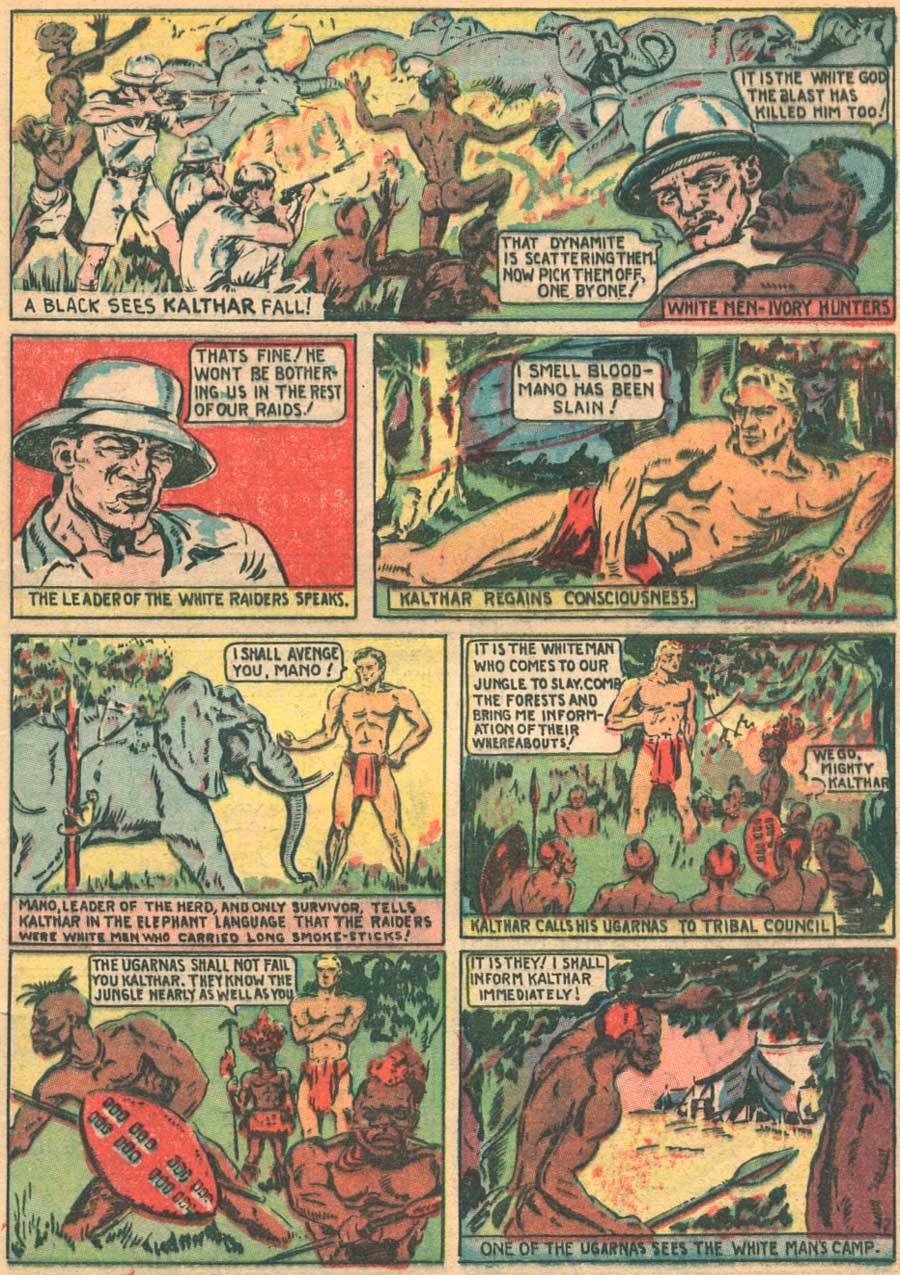Kathar ~ Giant Man/King of the Jungle – Page 8
On with our mystery…who is the mysterious E.S.P.? For starters, I can say that from a Golden Age Redux touch up artist’s point of view, he wasn’t as polished an artist of Lin Streeter. These first two pages made me think twice about spending so much precious time on Kalthar Redux. (Again, its not difficult work, but it does take a while to get through it.) I flipped forward, and luckily E.S.P. does find his stride in future stories…he gets better. I’m thinking he was probably thrown into the deep end with this first story and scratched it out best he could. So we persevere as well.
Of course, I should refer to him as R.S.P. Once I realized we weren’t working with Streeter any more I started checking the Golden Age Comic resources online to see if I could find out who RSP was. There are several databases to utilize. My favorite is the Fandom page for public domain super heroes, a catalog of hundreds of golden age characters whose copyrights have elapsed. From there you can find the Grand Comic Database, the Digital Comics Museum (where I find the pages I redux), the Golden Age Comics Museum, U.S. Copyright Records, etc…
Before long I found our man, and I was pleasantly surprised to learn about him.
Robert Savon Pious was born on March 7, 1908 in Meridian, Mississippi. He was the grandson of African American slaves. His father was a railroad worker who died young, age 42. At that point Pious’ mother remarried and added to her family for a total of ten children and they began moving north as part of the great migration of African Americans from south to north. Eventually settling in Chicago, Pious began working for a large newspaper printer and attended the Chicago Institute of Art. He met his wife around that time, also a local college student.
He left the Art Institute after a couple years to work in newspaper illustrations. One of his paintings won an award in NYC, and he was offered a four year scholarship to study at the National Academy of Design in New York City. He became a celebrated artist in the Harlem renaissance, specializing in paintings depicting African American history. He would work for Roosevelt’s WPA mural project, creating works in a number of schools and public buildings.
Here is some more info I found about Pious from the Pulpartists.com bio on him…
“From 1940 to 1953 R. S. Pious worked for many golden age comic book publishers, such as Street & Smith, Fiction House, Ace Periodicals, Archie, Chesler Studio, Novelty Comics and Victory Comics. In the 1950s he illustrated books for several publishers, including Grosset & Dunlap, Whitman Publishing, Harvey House, Random House, Funk & Wagnalls, and Bobbs-Merrill Publishing Company. Throughout the 1960s and 1970s his portraits appeared regularly on covers of the National Scene, a weekly magazine distributed nationwide as a Sunday supplement in many African-American newspapers. His artistic achievements brought him even wider recopnition and celebrity in his final years. He was popular enough to appear in an advertised product endorsement for Lucky Strike Cigarettes. In the 1970s Robert and Ruth Pious moved to a large apartment building at 801 Tilden Avenue in the Bronx, NYC, where they lived on the twentieth floor with a spectacular view of the NYC skyline. His portrait of Harriet Tubman is displayed at the Smithsonian Portrait Gallery in Washington, D.C.”
Pretty interesting, yes? Pious, as far as I can tell, was an American success story, someone who came from nothing and worked hard and moved on up to a deluxe apartment in the sky. In a time when our view of history is clouded by the emotional immaturity of the social media era, I think it’s a good thing to learn about people like Pious. Here’s a guy who was already well established in his own right and was brought in to tackle the challenges of comic book making (did you catch the Chesler Studios reference?). As under developed as some of his early drawings were when viewed through today’s lens, there is one unmistakable quality to them… this man draws African people to look like African people. They aren’t cartoons or racist caricatures by any stretch. What a surprise to discover that the bulk of Kalthar was drawn by a black man!
You’ll remember I thought twice about making these touch ups on Kalthar on account of its leaving me vulnerable to internet twerps ganging up on me and sullying my good name for revisiting a “white savior” … a dated cultural staple that doesn’t come across as correct these days. If I had backed off we’d be the poorer for it, having lost a little bit of knowledge about a pioneering comic book artist. In my experience, comics have always been diverse. I grew up enjoying work by Jim Lee, Whilce Portacio, Ann Noccenti, Ernie Colon, and of course my old boy, Jae Lee. I love the work of Grass Green and in my own work have made reference to Jackie Ormes’, Torchy Brown, a character older than Superman. And this isn’t even considering the Manga artists, who probably have us all beat. I mention this because I think its a shame that in an industry in which game has always respected game and the cream rises to the top, aspects of it’s history has fallen to the margins in support of a divide and conquer strategy to keep people cowed. Don’t speak out of turn or a Disney/Time Warner/corporate aristocracy will cancel you…we’ll take the specious ideas of the right and left wings and cram them down your throat to maintain power, so says the corporate aristocrat…
Here is a picture of Pious and some of his artwork, followed by the original Kalthar page, as usual:






Discussion ¬